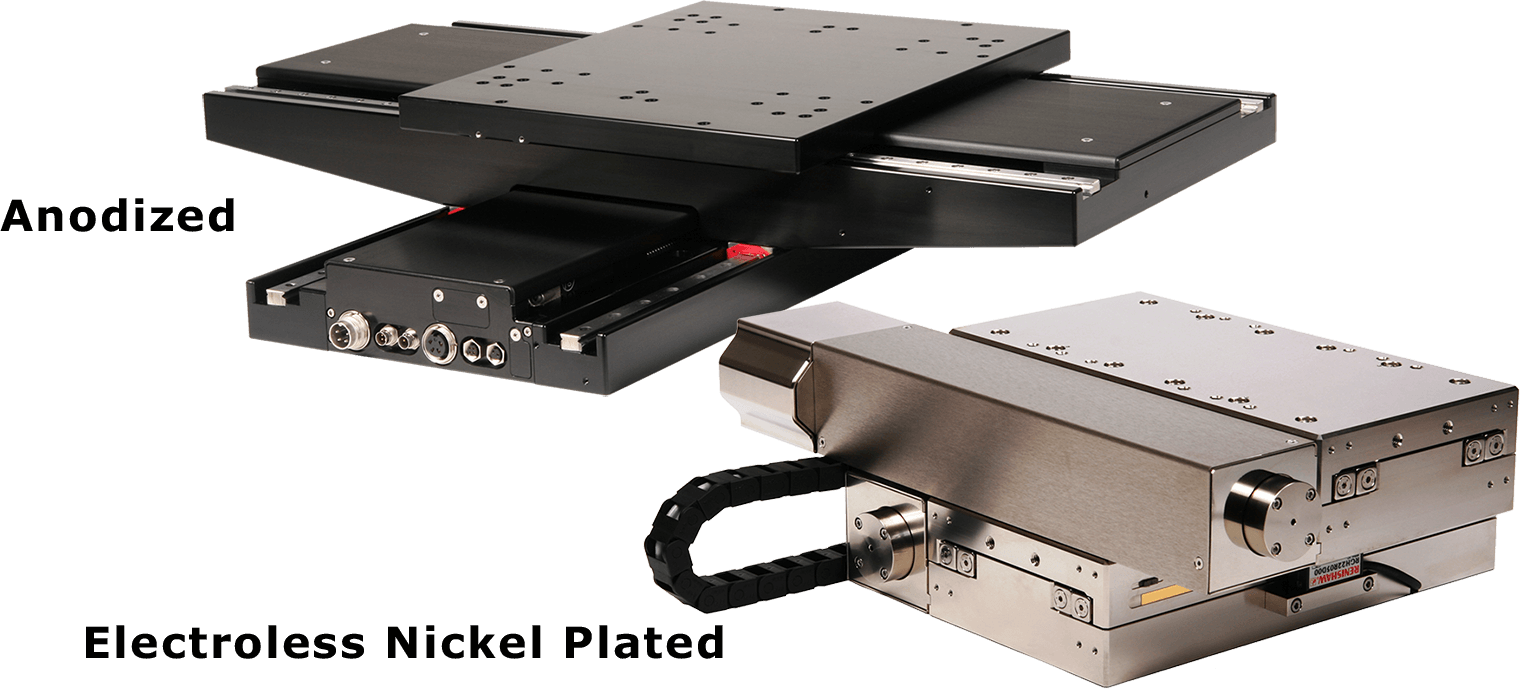Plating Finishes In The Motion Industry

At Reliant Systems, we utilize a couple of different plating finishes for our products. The main method which is used on most of our products is Anodizing. Another method is Electroless Nickel Plating, which is typically used for assemblies that will be used in applications dealing with electrostatic discharge sensitive microelectronic components.
What is Anodizing?
Anodizing is an electrochemical process that converts the metal surface into a durable, corrosion-resistant, anodic oxide finish. Aluminum is ideally suited to anodizing. The anodic oxide structure originates from the aluminum substrate and is composed entirely of aluminum oxide. While aluminum naturally forms oxide on the surface over time, the aluminum oxide that is formed during the anodizing process is more uniform, dense, and much harder than with natural oxidation. This aluminum oxide is fully integrated with the underlying aluminum substrate, so it cannot chip or peel. It has a highly ordered, porous structure that allows for secondary processes such as coloring. Anodized aluminum can be customized to different levels of durability. We also use a lot of “hard anodized” parts on some of our stages. Hard anodizing refers to an especially strong and durable form of anodized aluminum that differs in thickness and production from standard anodized aluminum.
What is Electroless Nickel Plating?
Electroless nickel plating, also called chemical or autocatalytic nickel plating, is an autocatalytic process. Unlike electro nickel plating, electroless nickel plating doesn’t depend on an electric current to apply nickel coating. Instead, a chemical reaction known as catalytic reduction deposits a layer of nickel-phosphorous alloy. Some of the benefits of electroless nickel plating include, a uniform deposit thickness regardless of part geometry, superior corrosion resistance, and improved hardness.
